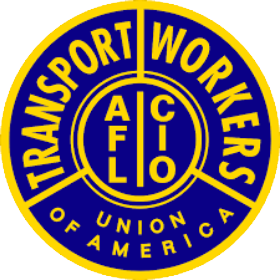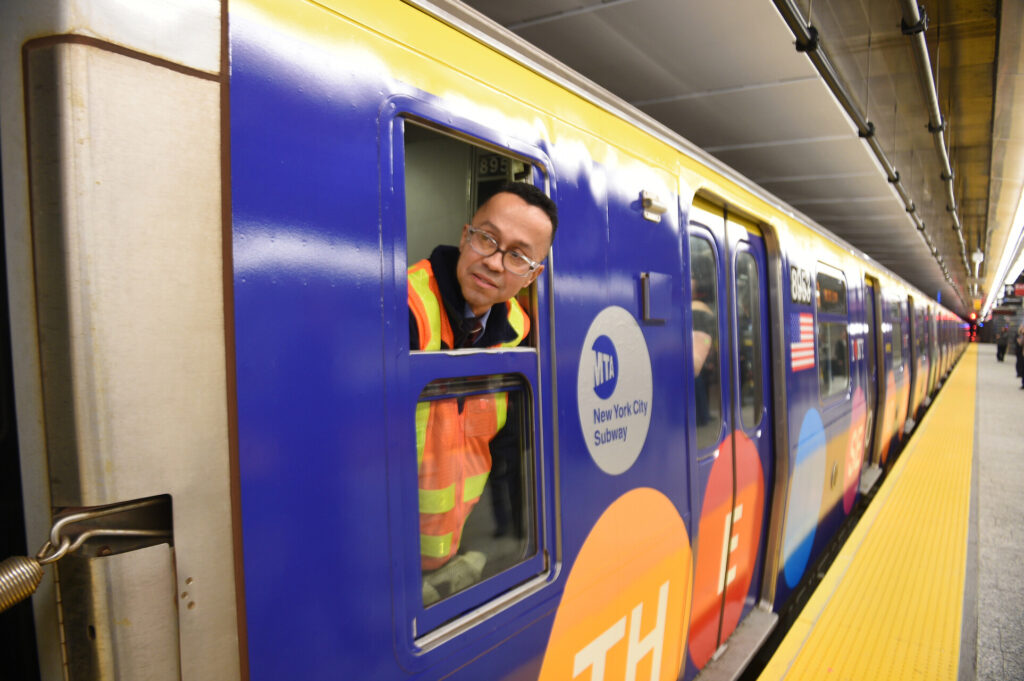This is the monthly edition of the Transport Workers Union’s Transportation Technology Newsletter. We aim to inform and educate our members, the labor movement, the public and policymakers about developments in transportation technology – and what the TWU is doing to ensure that new technology doesn’t undermine safety or harm the livelihoods of hard-working blue-collar workers. For suggestions and questions, please email ewytkind@gmail.com or adaugherty@twu.org.
ITEM OF THE MONTH
IT TAKES TWO: Using contract language negotiated decades ago and other means, the TWU has consistently fought off attempts by MTA management to remove Conductors from subway trains. A bill passed by the NY Legislature, now sitting on Gov. Kathy Hochul’s desk, would enshrine in state law a requirement that both a Conductor and Train Operator be on board. Fiscal and transit “think tanks” and “experts” have recently ramped up their push for automation as a cost-cutting measure. Hochul’s office said recently it is reviewing the legislation.
“Conductors and the two person crews staffed by TWU Local 100 workers will be here for the long haul, providing a safer subway ride,” said TWU International President John Samuelsen.
In 2022, after a madman threw smoke grenades on a southbound N subway train and then began shooting, TWU conductors evacuated passengers onto other trains and out of harm’s way. In the minutes after the 9/11 attacks, TWU conductors ignored directives to skip stops to pick up passengers – ferrying people away from the danger zone. Every day, TWU conductors act as eyes and ears on the subway system, working with law enforcement to keep riders safe.
“Every working New Yorker on the train in 2022, 2001, and day in, day out, appreciates the importance of a two-person crew,” Samuelsen said. “Having an Operator and Conductor on board is a significant crime deterrent and a critical safety lifeline in times of danger. The TWU has no regard for the self-important opinions of academics or ‘transit advocates’ who think that cutting jobs is a good solution.”
CRITICAL SET OF EYES: As Conductor Lashawn Murray recently told ABC 7, he is a second set of eyes on the platform instead of the Operator who is focused on the path ahead. “The train operator’s job is to move the train,” Murray said. “My job is to make sure passengers get on properly so we are definitely needed.”
WHAT ELSE IS COOKING
RULES NEEDED: TWU International Government Affairs Director Zack Tatz was part of a panel discussion on AVs at Carnegie Mellon University where he stressed that the autonomous vehicle industry is currently operating without enforceable safety standards.
“No matter what any AV company claims about the safety of their vehicles, the reality is that there is no yardstick to measure those claims against. There is no enforceable safety standard for AVs in the U.S. today,” Tatz said.
Tatz also said that Big Tech efforts to automate transportation should inherently involve conversations with labor unions who, like the TWU, have navigated changing technologies and how it affects workers for decades. Negotiating with unions, Tatz said, is the way for companies to ensure the highest levels of safety while learning from the blue-collar workers who move people every day. “Unions are built to manage technological transitions. We are an essential part of ensuring these transitions are done in a way that benefits working people, not just owners,” Tatz said. “One of the most important things that tech companies can do is engage the existing workforce to understand how transportation systems actually work.”
WAYWARD WAYMOS: It’s been a bad few weeks for Waymo. First, Waymo faces continued backlash for killing a beloved bodega cat in San Francisco, TechCrunch reports. The death of KitKat in SF’s Mission District has fueled opposition from SF Supervisor Jackie Fielder, who has proposed a bill to allow local voters to decide if autonomous vehicles can operate in their neighborhoods.
“A human driver can be held accountable, can hop out, say sorry, can be tracked down by police if it’s a hit-and-run,” Fielder told the New York Times. “Here, there is no one to hold accountable.”
But despite the bad press, Waymo continues its rapid expansion. The robotaxi company announced last week it would begin operating on highways in Los Angeles, Phoenix, and the San Francisco Bay Area, NBC reports. Previously, Waymos were limited to operating on local streets, putting the AVs at a disadvantage for riders in places like Los Angeles where many trips take place on limited access highways at higher speeds.
“Higher speeds pose higher risks,” said TWU International Administrative Vice President Curtis Tate. “Waymos can’t be stopped from hitting animals at low speeds on city streets, why on earth should we accept Waymos operating at highway speeds?”
DANGEROUS FOR CHILDREN: And while Waymos are coming to highways, federal authorities are investigating reports that their vehicles failed to follow traffic safety laws around stopped school buses, the Guardian reports. In one incident, a Waymo reportedly kept moving while approaching a stopped school bus with its red lights flashing, then proceeded to drive around the extended stop arm in front of the bus while students were getting off. The company responded to the incident by saying it will add additional “software updates” to improve stopping for school buses.
“Tech Bros hiding behind ‘software updates’ as their tech puts children in danger is unacceptable,” Tate said. “It’s clear that Waymos lack the judgement of a human driver in that situation – and in Georgia, where this incident occurred, human drivers who illegally pass a stopped school bus face a $1,000 fine and up to a year in prison.”
NO FINES: And, of course, Waymo has escaped the accountability a human driver would face for endangering students. CBS reports that Waymo was not issued a citation for the incident in Georgia, which was caught on video. And, to our knowledge, it isn’t possible for a vehicle to fit in a jail cell.
TROUBLE DOWN UNDER FOR TESLA: Australians have joined a class-action suit against Tesla for what they allege are “false claims” about the automaker’s so-called ‘Full Self-Driving” (FSD) technology, which has been the subject of other litigation and federal government safety probes. There are other class-action suits in the U.S. and China and recently a judge rejected Tesla’s attempt to shut down the U.S. case.
Tesla’s FSD system has drawn considerable criticism for many years including from National Transportation Safety Board Chair Jennifer Homendy who declared on CNBC’s Squawk Box Tesla’s FSD claims to be “misleading,” adding that “marketing something as full self-driving and it is not full self-driving, and people are misusing the vehicles and the technology, you have a design flaw and you have to prevent that misuse.”
NO SLEEP NEEDED: Not to be deterred, Tesla is now, according to news reports first reported by The Verge, recommending that drowsy drivers of its vehicles switch over to the FSD feature – apparently delivered through an in-car message.
“Automakers should direct drivers of their vehicles to pull over when they are tired, not kick on some confusing technology feature that isn’t meant to be used for autonomous driving,” Tate said. “Bogus claims of full self-driving capability by any manufacturer must be banned by federal safety authorities.”
Waco, TX Plans 9-Mile Corridor for ‘Futuristic Mobility Technologies’ In Waco, Texas, where TWU Local 276 members work at the Waco Transit System, local officials plan to test new mobility technologies in what is billed as the creation of a ‘Smart Corridor’ in preparation for future connected and autonomous vehicles.
The head of Waco’s Metropolitan Planning Organization says the project, approved by the Waco City Council and funded mostly by the Federal Highway Administration, is also looking ahead to other emergent technologies such as vehicle-to-everything wireless technology, roadway sensors, and network modeling. One of the projects will begin soon in partnership with the University of Texas at Austin and its Center for Transportation Research.
WHAT WE’RE READING
Nvidia-Powered Uber Robotaxis. Transport Topics.

